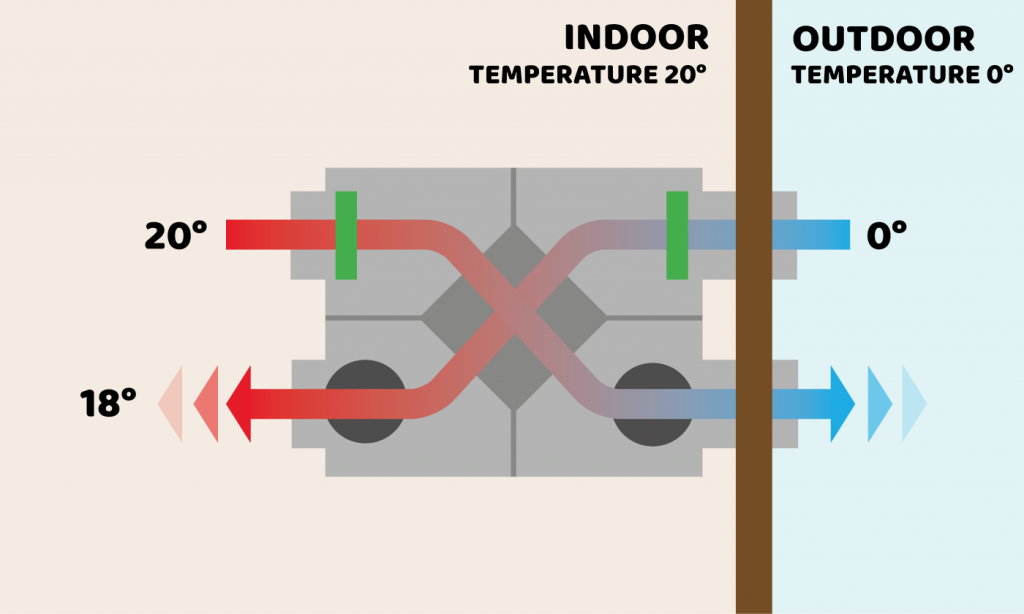Why HRV Is a Smart Investment for Modern Homeowners
Wiki Article
Discovering the Benefits of Heat Recovery Ventilation for Energy Performance in Homes
Heat Recovery Ventilation (HRV) systems offer house owners a useful method to enhancing power performance. By recovering warmth from outgoing air, these systems can significantly lower heating & cooling costs. Furthermore, they offer a steady supply of fresh air, enhancing indoor air quality and convenience degrees. As home owners think about lasting options, understanding the nuances of HRV systems ends up being progressively crucial. What elements should one evaluate prior to making such an investment?Comprehending Heat Recovery Ventilation Equipments

Just How HRV Enhances Indoor Air High Quality

Power Savings: The Financial Advantages of HRV
Taking full advantage of energy effectiveness, heat recovery ventilation (HRV) systems offer considerable economic advantages for home owners. By recuperating and recycling warm from exhaust air, HRVs noticeably minimize cooling and heating expenses. This technology can cause energy cost savings of approximately 30%, depending on environment and usage patterns. Property owners often discover lowered utility bills quickly after installment, making HRVs a financially wise financial investment gradually. In addition, lots of regions give rewards or rebates for energy-efficient upgrades, further boosting the financial appeal. As energy rates remain to climb, the cost-effectiveness of HRVs ends up being increasingly clear. Overall, the incorporation of HRV systems not only promotes power efficiency yet also adds to long-term economic savings for households.The Ecological Effect of Heat Recovery Ventilation
A considerable ecological benefit of heat recovery ventilation (HRV) systems depends on their capability to reduce total energy usage. By reclaiming warm from exhaust air and transferring it to inbound fresh air, HRV systems minimize the demand for energy-intensive heating and cooling down methods. This reduction in energy demand adds to reduce greenhouse gas exhausts, as much less fossil gas is needed to keep comfy interior temperatures. In addition, HRV systems improve indoor air high quality by effectively view publisher site exchanging stale air with fresh outdoor air, decreasing reliance on mechanical cooling systems that can damage the environment. Generally, the implementation of HRV systems sustains sustainable living methods and straightens with worldwide efforts to fight environment modification by advertising energy efficiency in domestic settings.
Selecting the Right HRV System for Your Home
Exactly how can home owners assure they select the best heat recovery ventilation (HRV) system for their demands? They ought to assess their home's dimension and design, as these variables influence air movement requirements. Next off, reviewing the system's performance scores is crucial, as higher ratings suggest much better performance and energy savings. House owners should also consider installment and upkeep costs, comparing various brand names and versions for worth. Furthermore, it is necessary to examine noise levels, as some systems operate even more quietly than others. Consulting with cooling and heating experts can give tailored referrals based on specific home problems. Analyzing user evaluations and guarantees can aid in making an educated decision, making certain that the picked HRV system efficiently boosts indoor air quality and power effectiveness.Regularly Asked Concerns

How Frequently Should I Tidy or Preserve My HRV System?
The frequency of cleansing or maintaining a warm recovery air flow (HRV) system usually depends on use and environmental elements. Typically, it is recommended to perform upkeep every 6 months to assure peak efficiency and air top quality.
Can HRV Equipments Help In Reducing Moisture Levels Inside?
HRV systems can efficiently minimize interior humidity degrees by trading stagnant, moist air with fresh, drier air from outside. HRV Heat Recovery Ventilation. This process helps preserve a well balanced interior atmosphere, boosting convenience and stopping moisture-related issues
What Is the Life expectancy of a Typical HRV System?
The life-span of a regular heat recovery ventilation (HRV) system differs, normally lasting between 10 to 15 years. Routine upkeep can prolong its effectiveness and operational life, ensuring peak efficiency throughout its use duration.Exist Any Type Of Sound Worry About HRV Equipments?
Sound interest in HRV systems can occur, particularly from fan procedure. Nevertheless, lots of contemporary systems are designed to decrease sound levels, ensuring they operate quietly while maintaining performance, which addresses potential disturbances in living atmospheres.Can I Install an HRV System Myself, or Do I Required an Expert?
The specific contemplated whether to set up the heat recovery ventilation (HRV) system directly or hire a professional. Normally, while DIY setup is feasible, know-how warranties appropriate performance and compliance with neighborhood building regulations, boosting system efficiency.Report this wiki page